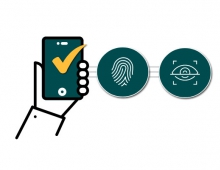
Japan's LINE Gets First "FIDO Universal Server" Certification
LINE, the Japanese company that controls social media, online messaging and payment services in Asia, will soon add password-free authentication services based on the the FIDO standard.
Additionally, FIDO has introduced a new Universal Server certification for servers that interoperate with all FIDO authenticator types (FIDO UAF, FIDO U2F, WebAuthn, CTAP).
The company has acquired Fido's new Universal Server certification for servers, which supports the full range of FIDO authenticators (UAF, U2F, FIDO2).

LINE plans to introduce FIDO2 authentication to its services by the spring of 2019 spring.
LINE is currently offering password-based login functionality to the owners of a LINE account. These credentials can be used for the desktop version of the LINE application and various other applications. However, services such as "LINE Pay" require users to add extra PIN codes. With the universal server certification, biometric authentication (fingerprint authentication, face authentication, etc.) can be used in order to acccess "LINE" services. LINE will also offer its new secure biometric authentication service to third party applications.
The FIDO protocols use standard public key cryptography techniques to provide stronger authentication. During registration with an online service, the user’s client device creates a new key pair. It retains the private key and registers the public key with the online service. Authentication is done by the client device proving possession of the private key to the service by signing a challenge. The client’s private keys can be used only after they are unlocked locally on the device by the user. The local unlock is accomplished by an action such as swiping a finger, entering a PIN, speaking into a microphone, inserting a second–factor device or pressing a button.
The FIDO protocols do not provide information that can be used by different online services to collaborate and track a user across the services. Biometric information, if used, never leaves the user’s device.




















